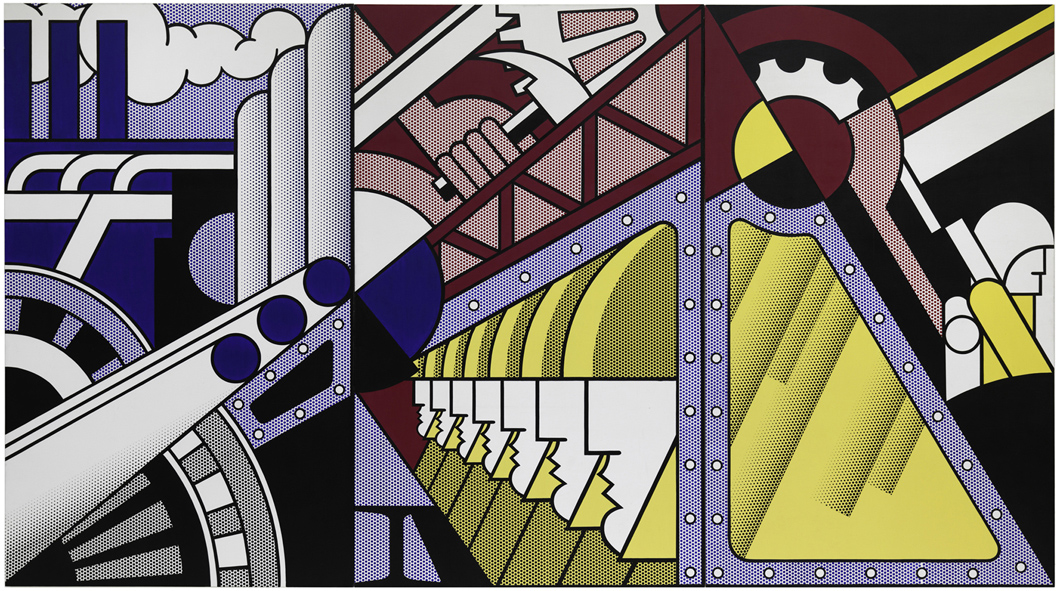Comune of Vercelli announces the sixth in its highly successful series of exhibitions promoted by the Piedmont Region in partnership with the Peggy Guggenheim Collection and curated by Luca Massimo Barbero.
This eagerly anticipated show titled ‘The Sixties in the Guggenheim Collections. Beyond Informel towards Pop Art’ will be on public view in the Arca of Vercelli from 9 February to 12 May 2013.
Following last year’s exhibition dedicated to Miró, Mondrian and Calder, 50 works of European and American art from the 1960s have been assembled for Vercelli this year. Robert Rauschenberg, Jean Dubuffet, Cy Twombly and Frank Stella are among the protagonists of this extraordinary decade.
The exhibition includes several works from Andy Warhol’s 1964 series of Flowers. Thirteen works from the Hannelore B. and Rudolph B. Schulhof Collection, recently acquired by the Peggy Guggenheim Collection, will be on view to the public for the first time outside of the Venetian museum.
The exhibition sets out to illustrate the artistic panorama of the sixties. It does so by confronting European and American creativity in a transoceanic dialogue. This approach, made possible by the resources of the Guggenheim collections in Venice and New York, reveals parallelisms that disclose a new dimension of visual culture.
1964 saw the triumph of American Pop Art at the Venice Biennale. Robert Rauschenberg was awarded the Grand Prix for painting, signalling a shift in the art system’s center of gravity from Paris to New York.
Less than a year had passed since the assassination of United States President John Fitzgerald Kennedy, in Dallas, Texas, an event which had seemingly stifled the American Dream. The work of Rauschenberg, with its audacious originality, witnessed the beginning of a world in which media and communication play an increasingly central role, influencing everything from art to literature to cinema.
In June 1964, the unanimous recognition that decreed his success created a sensation, and for the first time European art lost its cultural dominance over the United States.
The exhibition narrates this transition through different avenues of research, exploring three segments of intentionality?”those of pictorial reduction through the use of monochrome, the new values given to objectivity and structure, and the evolution of a demotic figurative language drawn from media icons and advertizing imagery.
Monochrome, this new figuration, and pictorial experimentation of a synthetic, almost conceptual kind, were the poles between which the American and European artistic research moved, in a complex coexistence.
The exhibition unfolds by signalling three fundamental moments that reveal much about art during this period. The first is represented by a situation of the Informel transitioning to a new attention to signs and intervals, in which matter and language become instruments of an unprecedented experimentation: artists such as Dubuffet, Antoni Tàpies, Twombly and Mark Tobey.
Parallel to this, the reduction of expressiveness is represented by various treatments of monochrome and of pictorial space, based on the emptying out of composition, emotional coolness, and the material redefinition of how paintings are made (such as the shaped canvas), expressed by artists such as Fontana, Enrico Castellani, Stella, Kenneth Noland, Morris Louis, Agnes Martin and Bice Lazzari.
The culmination of the show is represented by the icon and the media revolution of the new Pop figuration, based on the reinterpretation and desecration of traditional visual communication according to the coordinates of the contemporary trends of New Dada, New Realism, and Pop Art, represented in the exhibition by artists such as Jasper Johns, Rauschenberg, Richard Hamilton, Roy Lichtenstein and Warhol.
(Press release)

